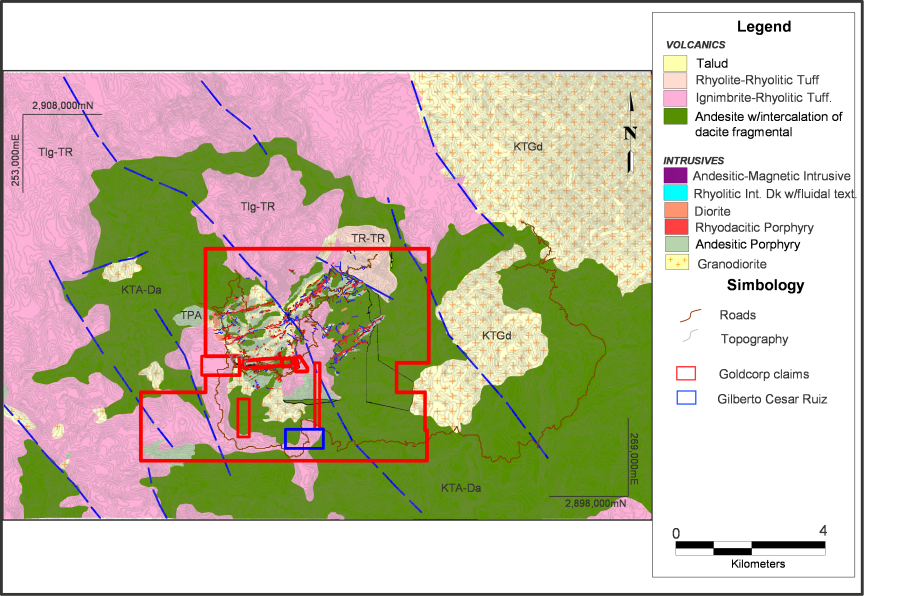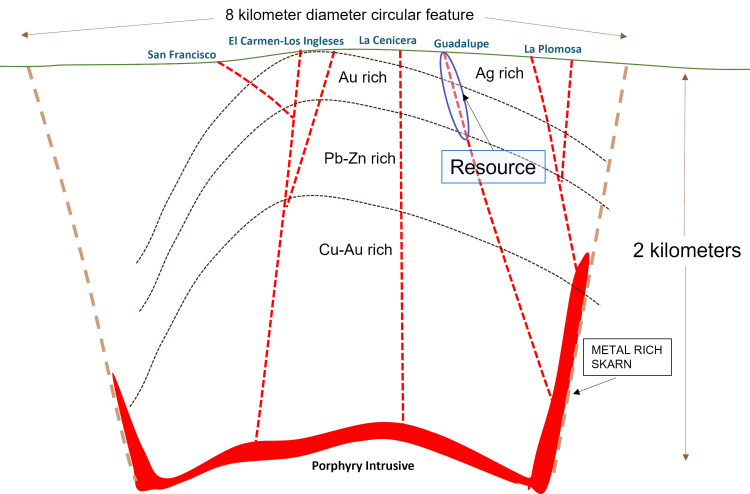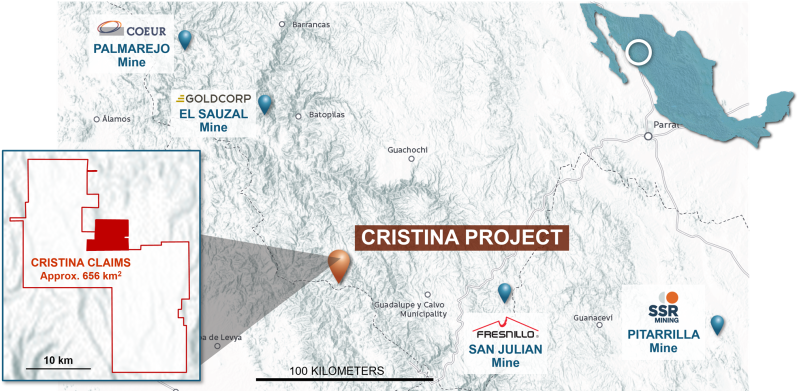- Multiple outcropping quartz veins consistently over 10 m in width
- Primarily Au-Ag-Zn, similar to Fresnillo’s San Julian mine that produced 14.2 Moz of silver and 46.7 koz of gold in 2022
- Initial open pit + underground resource estimate:
- 752 koz AuEq Indicated at 1.33 g/t AuEq
- 777 koz AuEq Inferred at 1.27 g/t AuEq
- 2 year plan to drill 21,000 meters targeting conversion of high grade inferred to indicated and resource expansion
Location
Located southwestern Chihuahua State in northern Mexico, 190 km southwest of Parral city. The project area has excellent infrastructure with road access from several directions, two options for 3-phase power within 7 km and access to water.
Geology & Mineralization
The Cristina deposit is an epithermal to mesothermal vein system where the mineralization is predominantly gold and silver, with lesser base metal values. Mineralization is hosted in multiple outcropping quartz veins that are frequently greater than 10 metres in width, and extend for a currently known strike length of up to 5 km. Only the Guadalupe vein has been drilled to a density sufficient for a resource estimate, leaving considerable potential to add resources in at least four other parallel mineralized vein structures discovered to date. On the west side of the Guadalupe vein and part of Ingleses-La Estrella vein, broad stockwork zones of quartz veinlets and dissemination of gold, silver and sulfide minerals, from 30 to 50 meters wide is observed, indicating the possibility of bulk minable zones with low-grade gold and silver, surrounding high-grade veins.
The Cristina mineralization is similar to other active mines in the region including San Julian (Fresnillo), La Cienega (Fresnillo) and Tayoltita/San Dimas. These are all multi-million gold equivalent ounce long life underground vein mines. The largest of which is Tayoltita/San Dimas district to the south where 3.5 million gold ounces have been produced.

High grade gold tends to be in banded quartz veins with calcite replacement textures, adularia and amethyst and always associated with lead, zinc and copper. Most veins have widths ranging from 4 to 10 meters. In some areas, quartz-rich veins are older and cut younger massive sulfide veins, giving the impression that there are many stages of overlapping mineralization.
In the north part of the project gold is associated with base metals and quartz adularia veins in close proximity to an intrusion. In hole CRD15-53, at a depth of 167m an adularia-rich vein has high-grade gold and up to 10 percent galena and sphalerlite on the margins.

Work Program
Four Identified targets:
- Conversion of high grade inferred to indicated
- Resource expansion along strike and at depth
- Resource expansion in high grade areas of parallel veins
- Metal rich skarn at depth
Based on the Jan 2023 NI 43-101 Recommendations
Phase 1:
- Up to 21,000 m of drilling focusing on high grade conversion and expansion
- Update resource model
- PEA decision

